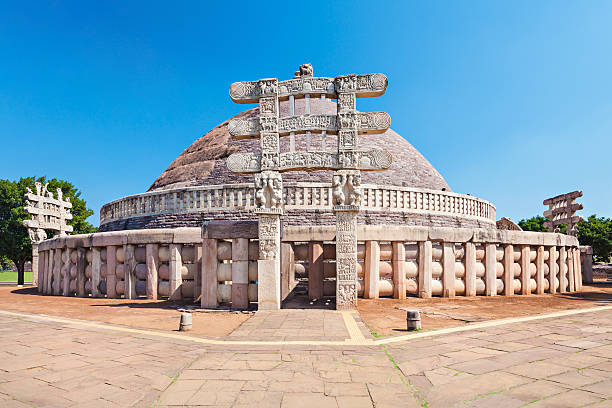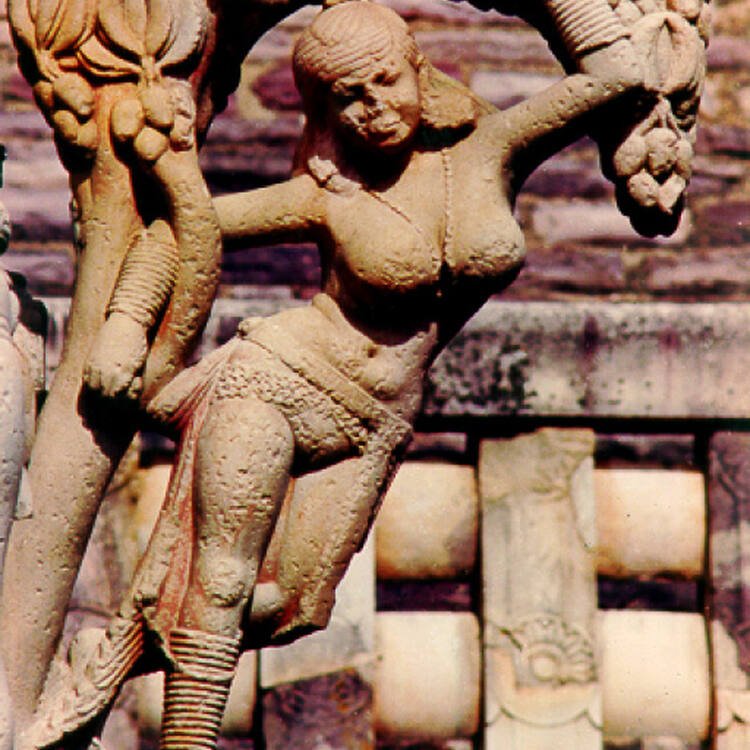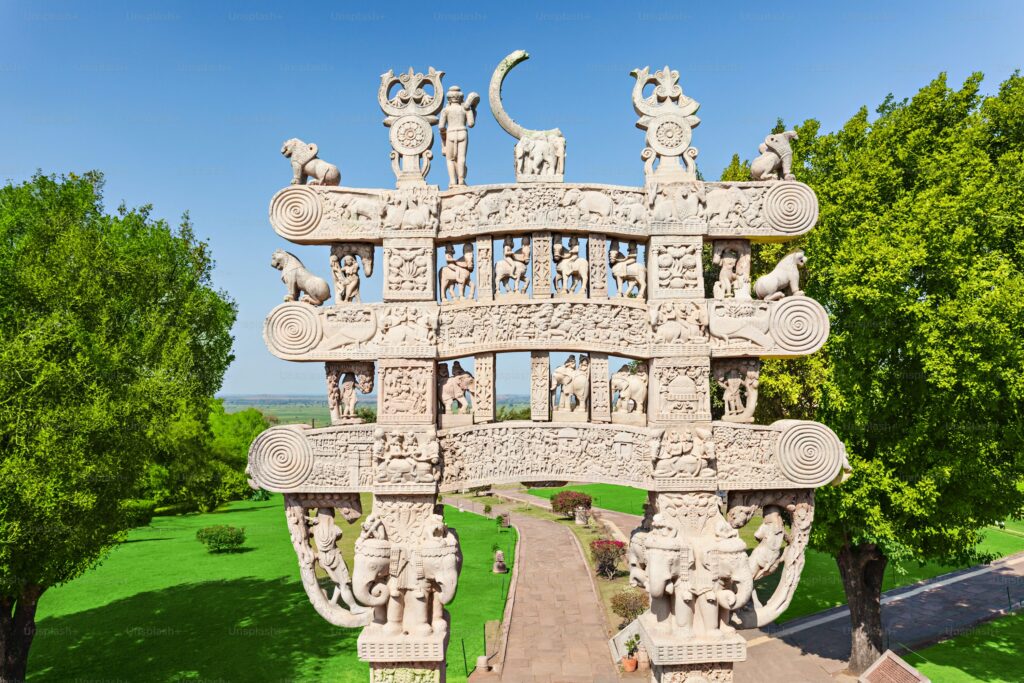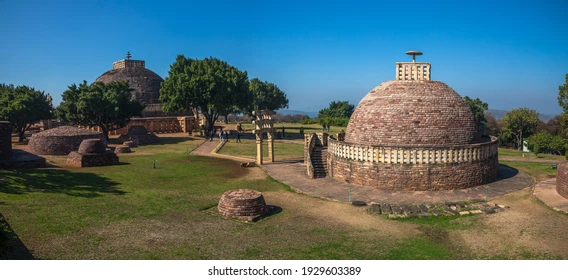
Introduction
Geographically located in the middle of Madhya Pradesh, Sanchi Stupa is India’s competitive work of art that testifies to its unparalleled history and heritage. Sanchi Stupa, the best witness to Buddhist yester-years’ medieval Indian stupas, reminds us even today as far as our duty is concerned to collective glory of Buddhism under Emperor Ashoka’s patronage and his attempt to leave preachments behind for mankind.Sanchi Stupa, one of the UN world heritages, is a heaven on earth for historians, an army of pilgrim tourists thronging pilgrimages simply to see yester-years’ glory of Buddhist architecture.
Sanchi Stupa History
The Sanchi Stupa itself is brimming with history where India’s great emperor, Emperor Ashoka, had constructed all this ages and ages back in ancient times long ago in the 3rd century BCE. It was a simple brick stupa in the initial stage and afterwards it was upgraded and filled by other dynasties, i.e., during the period of Shunga and Satavahana dynasties. The stupa holds remnants of Lord Buddha and so it is a prayer temple to all the Buddhists throughout the whole world.
Stupa bought majority rich and richest quality of stone of Shunga period, and gateway sculpture or toranas of early years were constructed. Satavahana sanctified the temple by childifying it in character and constructing the monument to never-to-be-better monument. The monument withstood centuries’ war, history, and master hand to master hand.
Sanchi Stupa is one of the finest surviving Buddhist monuments in the world.
Masterpiece of Architecture
Sanchi Great Stupa is the most stunning Buddhist architectural wonder. It’s renowned for its:
- Gigantic Dome: Domed, ball-shaped in design, symbolizes world and cycle of birth, death, and rebirth.
- Harmika: Small square temple on the dome, symbolizes heaven of gods.
- Triple Umbrella (Chatra): Three round discs over harmika, symbolizes three gems of Buddhism – Buddha, Dharma, and Sangha.
- Toranas (Gateways): Four cardinal toranas, most of which are large are cusped carvings of Ashokan period scenes, life of Buddha, and Jataka scene.
- Medhi (Walkway of Pilgrims): Pilgrims’ walkway to surround is circumambulation of stupa.
The four most remarkable gateways or toranas of Sanchi Stupa are gateways. Gateways are Buddha’s life and non-human relief Buddha accounts relief. His life has been visually represented in the depiction of a sequence of motifs like Bodhi tree, footprint, or empty throne. Toranas refer to half-life chronology of Jataka stories and Buddhist philosophy chronologies of Buddha.
Cultural and Spiritual Significance
Sanchi Stupa, sacred site of consciousness and inspiring site too. Sanchi Stupa is syncretic culture of bloodshed period of Buddhism and work of Emperor Ashoka to change war emperor to peace emperor. Sanchi Gateway paintings are telling us life of Buddha and showing us good values, showing us non-violence, generosity, and truthfulness.
Sanchi was among the few Mauryan monuments that had accepted Buddhism as their faith. The monument itself achieved the same height of inscriptions on the scholars’ and pilgrims’ shrine from all corners of the Asian continent visiting the monument and thus making Buddhism philosophy popular too. Scholars, monks, and travelers from the entire world pay visits here in intervals to meditate and obesiance updated.
Sanchi Stupa Tour
Sanchi Stupa is the view itself, but the remainder of the balance of the view leaves us to so much more of Buddhist history:
- Sanchi Museum: Objects, sculpture, and relics found around and inside Sanchi.
- The Ashoka Pillar: Emperor Ashoka’s inscriptions found on the sandstone pillar.
- Other Stupas and Monasteries: Other monasteries, stupas, and ruins of ancient Buddhist monasteries that are everywhere on the surface.
- Udayagiri Caves: Rock caves located around 13 km from Sanchi, famous for Hindu and Jain religious tolerance carvings of India.
Best Time to Visit
If at all traveling is to be undertaken, the optimal time to travel to Sanchi Stupa is October to March when the weather is still agreeable. The site is nicely maintained and full of a serene atmosphere, ideal for both history enthusiasts as well as spiritual explorers.
How to reach Sanchi Stupa
- By Air: Nearest airport is Raja Bhoj Airport, Bhopal, 55 km.
- By Train: Nearest railway station is Vidisha, and Sanchi is 10 km from Vidisha.
- By Road: Good road facility and good road connectivity from Bhopal (46 km) and from local townships of the region.
Sanchi Stupa transports one to India’s golden age and Buddhist grandeur splendor. One is not architecture enthusiast, spirituality enthusiast, and history enthusiast but any pilgrim human being at Sanchi will be sacred and speechless. It is where religion, history, and art come together to remind one proven-and-trusted Lord Buddha quotes.
Besides sheer natural beauty of Sanchi Stupa, it also takes our imagination to a great extent on however strong is religion in replacing civilization. All such unimaginable Torana relief relief sculpture carvings, divine madness dome of such enormous size, rock excavation heritage are so flawlessly worth art pieces.
And therefore, if you have not been lucky enough to go to this holy site, add Sanchi Stupa to your travel itinerary! Sanchi is no stroll through pages but a stroll to the summit of Buddhist wisdom and nursery of India’s architectural greatness.


